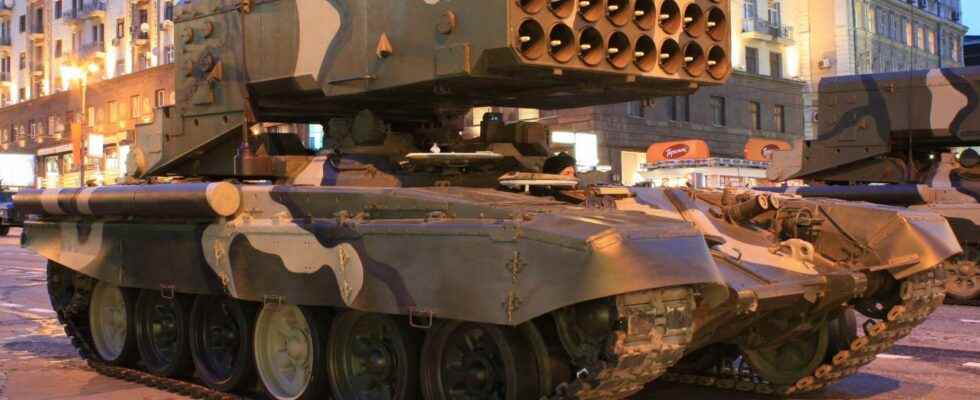You will also be interested
[EN VIDÉO] What is the most powerful nuclear bomb in history? On October 30, 1961, a 57 megaton atomic bomb exploded over the site of Novaya Zemlya, Russia. Baptized Tsar Bomba, it is the most powerful bomb in history.
In Ukrainefrom pictures showing TOS-1A multiple rocket launcher vehicles near urban areas sent shivers down the spine of military experts. Otherwise called Buratino, the TOS-1A is based on a Soviet T-72 tank structure. It is what is in its 24 tubes of 220 mm in diameter that is worrying. the launcher is loaded with rockets with a thermobaric charge. By the lethality and the destruction which it involves, this type of armament is the ultimate armament before the missile tactics with nuclear warheads. These are clearly what are called weapons of mass destruction. Oksana Markarova, the Ukrainian ambassador to the United States, accused Russia of having used these thermobaric munitions in Ukraine at least once. According to her, their use under these conditions violates the Geneva Convention. These weapons would have potentially bombarded residential areas of Kharkiv, the second largest city in northeastern Ukraine near the Russian border.
Thermobaric munitions are known by other names such as: fuel-air explosives, bombs aerosols and vacuum bombs. When it comes close to its target, the warhead detonates a charge that vaporizes a liquid. This one comes to mix with theair. It is after this that a second explosive compresses and ignites the air with a temperature that can reach 3,000°C. This has the effect of generating an overpressure practically twice as powerful and lasting as that generated by a warhead conventional. Unlike the latter, a big depression intervenes immediately to cause even more damage.
Video showing a Buratino loaded with thermobaric weapons near Mariupol, the main port city of the Sea of Azov. © Twitter
A powerful deadly blast effect
The walls and buildings do not really provide protection. They even amplify the effects of the explosion by generating significant shock waves. These thermobaric weapons are nothing new. They were used by the Russian army in Grozny, Chechnya, with the results that we know. For once, the TOS-1A are not operated by the artillery, but by special NBC units, that is to say specialized in nuclear weaponsradiological, biological and chemical.
Just their presence is intimidating, to the point of making it a weapon enough dissuasive to gain ground without too much effort. Their potential use, since February 24, the date of the beginning of the Russian invasion of Ukraine, comes to feed a list of acts that may be similar to war crimes. Karim Khan, the prosecutor of the International Criminal Court, has announced that he is opening an investigation into war crimes and crimes against humanity that have allegedly taken place in the territory since the beginning of hostilities, that is to say from 2014 with the war in the Donbass.
Interested in what you just read?
